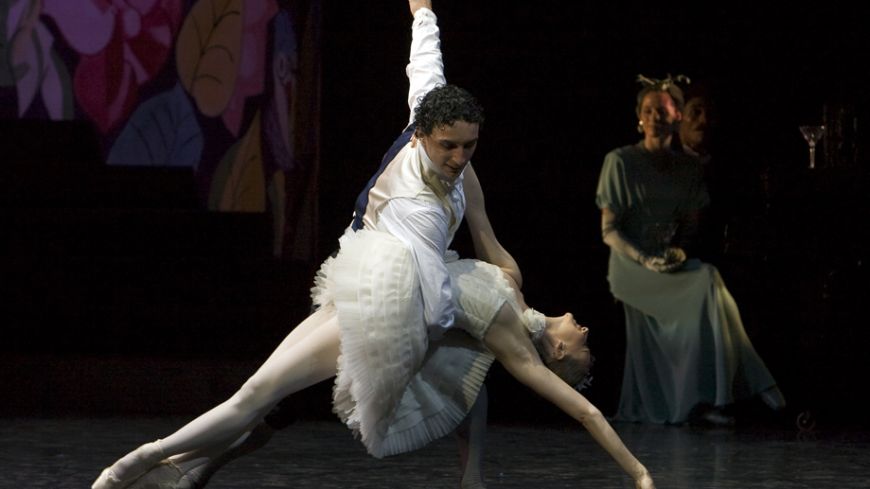
The ballet of Sleeping Beauty has enjoyed huge success for over 120 years, since it was first performed in the late nineteenth century. The enduring theme of the struggle between good and evil and the symbolic narrative of the hundred-year sleep and subsequent awakening to momentous change, have kept audiences gripped and provided artists with the opportunity to find new and different ways of exploring and expressing these themes.
To prove this point, the Scottish Ballet’s inspired collaboration between Artistic Director Ashley Page and Designer Antony McDonald, means that this particular iteration of Sleeping Beauty is now on its third run and still playing to packed houses.
The setting for the story in this production mirrors the journey taken by the ballet itself, from its inception in Russia to its first performance by Sadler’s Wells at the Royal Opera House in London in 1946. Therefore the Prologue, depicting Aurora’s christening, is set in Russia, on an idyllic summer’s day on the lawn of the palace grounds.
The exquisite costumes, originally designed by McDonald, the clever set and atmospheric lighting (which is superb throughout) transports the audience to the late Regency/Gothic period. Aurora’s 16th birthday party is then similarly set in the hot-house of the Royal Palace in Russia in the year 1846 and her wedding, a hundred years later after being awakened by ‘love’s true kiss’, is set in a distinctly art-deco London hotel in 1946, with truly fabulous Dior-inspired costumes.
This clever use of setting enabled a thoughtful distinction to be drawn between the mortal world and the fairy world, with the mortals fully dressed in the fashion-conscious attire of their day and the fairies appearing in the timeless, traditional ballet tutus. The exception was the ‘bad’ fairy, Carabosse, who was depicted in Gothic dress.
Her entrance was dramatically heralded by the deliberately obvious device of pathetic fallacy, as the sun bathing the christening guests in a heavenly light is suddenly eclipsed by a giant black spider, casting a foreboding gloom over the proceedings. The costumes - stunning and representing high-end fashion at its best -enabled fabulous and emotive visual spectacles to be created.
This was also a witty and modern production that saw Aurora pricking her finger on a giant, grotesque flowering cactus and later receiving a toaster as a wedding gift. The choreography punctuated the classical style with some distinctly contemporary moves that surprised and delighted the audience.
This was particularly in evidence in the final act in which a series of solos and duets are performed at Aurora’s wedding reception. It was at these moments that the audience responded most vocally, with gasps, laughter and cheering drowning out the polite applause, making for a more inclusive and exciting atmosphere than one is used to when attending the ballet.
Stand-out performances came from the King and Queen (Owen Thorne and Eve Mutso), Bluebird and the Lady Bluebird/Song Fairy (Adam Blyde and Tomomi Sato) and Kara McLaughlin as Carabosse. However, there were no weak links in this magnificent creation.
Apparently the original was over four hours long and while this production came in at under three, cutting it back further to two and a half (including intervals) could have made this magical and impressive production completely picture perfect!
Ends Sat 14th January

